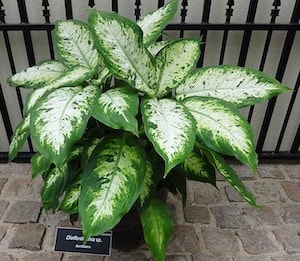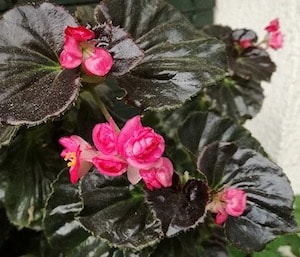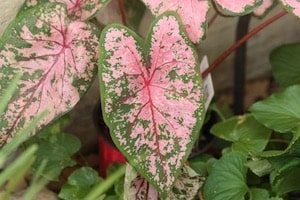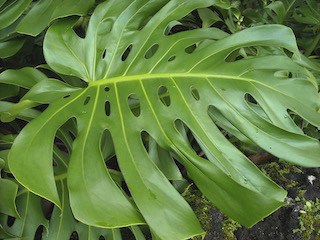
What houseplants are poisonous to cats? This is a question common with pet owners. However, before we get to the answer, let’s know what houseplants can do for you. Besides enhancing the aesthetic value of your house, houseplants can help improve indoor air quality, reduce background noise, and create a pleasant atmosphere to relieve stress.
However, even with all these benefits, they can be a danger to your pets, especially your cat. That’s why it’s a good idea to which plants are toxic before your cat becomes a statistic. When a cat consumes these houseplants, severe symptoms will manifest, and if not treated in time, your cat could get very sick.
Houseplants Poisonous to Cats
Dieffenbachia

Dieffenbachia, sometimes known as dumb cane, is one of the most common indoor tropical plants today. It originated from Central and South America. It’s characterized by large yet attractive leaves, no wonder that most people want to keep it indoors.
It’s poisonous to cats because it contains a compound called raphide (calcium oxalate crystals). Raphide causes burning, and stinging sensations to the cat’s tongue, lips, digestive tract, and mouth. It becomes worse when the raphides block the airways, leading to breathing difficulty. When the cat’s skin is exposed to this compound, an itch or a rash may develop. The cat’s cornea may be damaged if the compound comes into contact with the eyes.
If you’re handling this plant, it’s recommended that you wear gloves because if you ingest it, symptoms like nausea, diarrhea, and vomiting will occur. This is another toxic plant to banish if you have cats and other pets.
Begonia

Begonia is a succulent plant with colorful flowers and leaves. It’s mainly used as a pot plant for booth both indoor and outdoor spaces. It thrives in tropical and subtropical climates. If you have a house or an apartment, you’ve probably contemplated having this plant, especially if your indoor spaces are a bit dark. Let’s face it; it’s a daunting task to find a plant that can withstand low-light levels, which is why Begonia is popular in homes and apartments.
But did you know that Begonia plant is toxic to cats? Yes, it is: In fact, it contains a poisonous compound called oxalate, which is dangerous when consumed by cats. Specifically, the oxalate crystals attach themselves to different body tissues, causing severe irritation. The compound can also breakdown to form oxalic acid, a powerful irritant. A cat’s immune system is not hardy. Even ingesting small quantities could show symptoms like dehydration, vomiting, oral sores, loss of appetite, inability to swallow, excessive salivation, swelling and redness around the cat’s mouth, grimacing and licking of lips. So if you have indoor cats, it’s a good idea to rid your house of this plant.
Caladium

Caladium (also known as elephant ear, heart of Jesus, and angel wings) is a tropical plant characterized by heart-shaped, eye-catching, and colorful leaves. It’s mostly grown in containers both indoors and outdoors. Although it’s glittering, it’s poisonous to cats.
Why is Caladium poisonous to cats? It contains a substance called raphide, which causes dieffenbachia poisoning-like symptoms. To adults, Caladium is not poisonous, but when consumed in large amounts, the effects may start to show. However, it’s toxic to children. And when it comes to cats, even small amounts can be lethal. If your cat ingests it, give it milk or water to neutralize its effects. Also, wipe its mount with clean cloth and water.
Philodendron

Philodendron is an indoor and outdoor foliage plant that thrives in tropical areas. It doesn’t need a lot of light, which is why it can survive indoors. It originated from the jungles of India, Panama, and Mexico. It’s characterized by shiny, heart-shaped leaves and grows pretty fast. Cats have a habit of nibbling this plant, yet it’s poisonous because of the presence of calcium oxalate crystals. When consumed, these crystals irritate the digestive system. Symptoms related to ingestion of Philodendron by cats include abdominal pain and drooling. Therefore, if you have cats in your house, this is one plant you need to banish.
Prevention
If cat poisoning is detected early and treated, full recovery can be quick, a week or two, to be exact. However, prevention is always better than cure because it will not only save you the trips to the vet but money as well. Make sure to keep these plants poisonous to cats out of your house.
